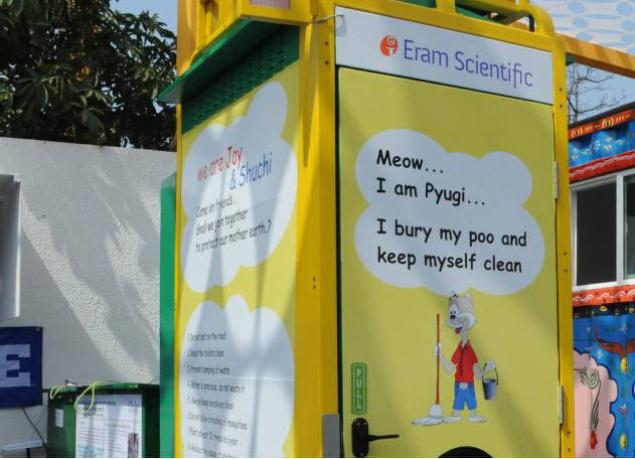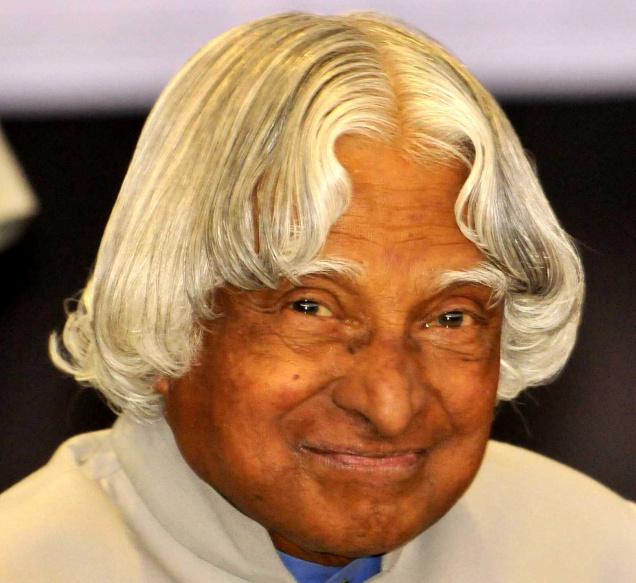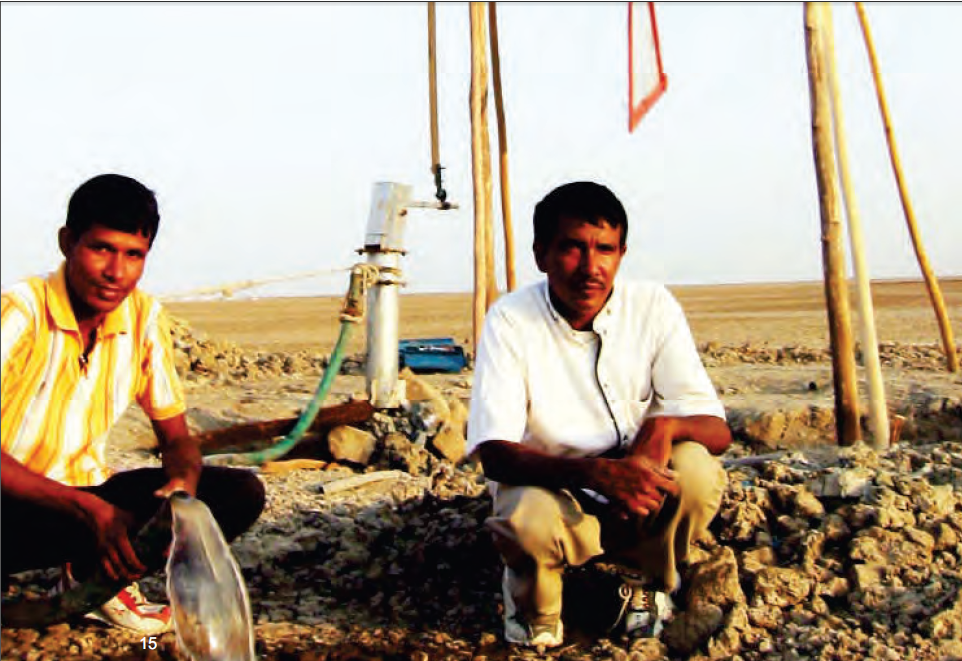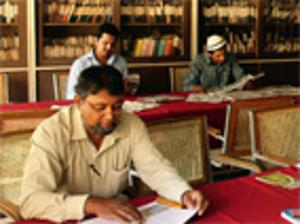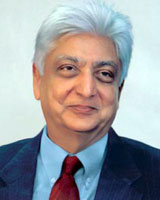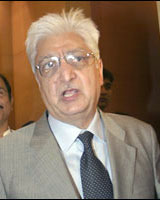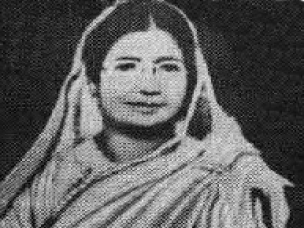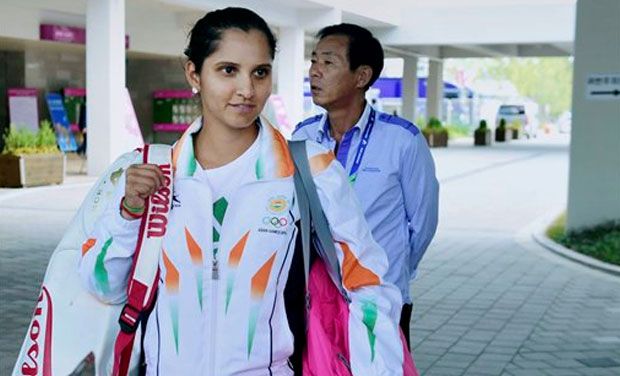San Francisco:
The Aligarh Muslim University Alumni Association of Northern California carried on its annual tradition of holding Sir Syed Day in the San Francisco Bay Area with a fine evening of cultural expression, reflection and entertainment at the ICC in Milpitas on Saturday, September 20th.
Funds were also collected on the occasion for the Aligarh Education Endowment Fund (AEEF) which supports those whose path to education is impacted by lack of funds or social mobility. Both children and youth are assisted through this AEEF vehicle and one can commend Aligarh Muslim University (AMU) alumni for making their annual homage to Sir Syed Ahmad Khan, the founder of their Alma Mater an added purpose.
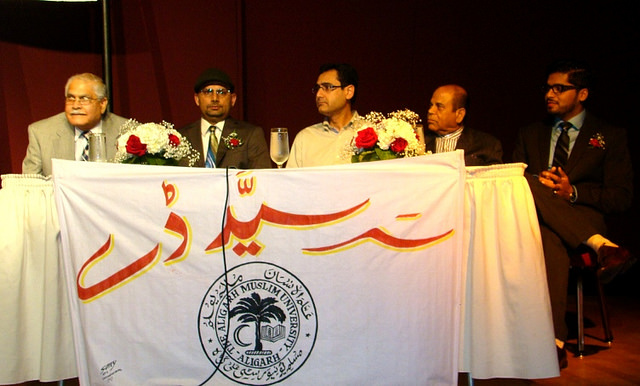
After a fine dinner of Mughlai cuisine the formalities began with the traditional recitation from the Holy Qur’an by Mohammed Nadeem. Emcee for the evening Dr. Shaheer Khan made the necessary introductions. He said that everyone here needs to be thanked for their dedication, because the hall tonight is full to its maximum capacity and people unfortunately had to be turned away. He added that the Mushaira or Urdu poetry recital held here attracts many people but it is the cause which is the prime reason for this gathering, which is Sir Syed and AMU. He said that Aligarh was and is a movement and not just a place. He also took the opportunity to thank the sponsors and supporters along with the ICC for making this event possible. He also recognized local South Asians who are running for positions in the upcoming elections (Mohammed Nadeem running for Santa Clara City Council and Moina Shaiq running for Fremont School Board were here. Congressional candidate Ro Khanna was to arrive later).
Next was the President’s Welcome which this year was given by the new head of the AMU Alumni Association of Northern California, Mr. Shachindra Nath. In his short speech Shachindra Sahib welcomed everyone and took the opportunity to share his familial connection with Aligarh Muslim University (AMU) which his father also had the good fortune to attend. He pointed out the mutual respect and tolerance which he found at AMU. “I am so proud to be an Aligarian,” he said. Shachindra Sahib has been a dedicated member of the AMU Alumni Association for several years and it should come as no surprise that today he is the President of this organization.
The Sir Syed Day keynote address this year was presented by Ambassador Islam A. Siddiqui. Dr. Siddiqui till recently served as Chief Agricultural Negotiator in the Office of the U.S. Trade Representative and has now joined a think tank, the Center for Strategic and International Studies (CSIS) as a senior adviser in its Global Food Security Project in Washington DC. He is also a very familiar face to many of us in northern California because of his many years working for the State of California in Sacramento and for his long-time community activism; he is one of the founders of UMA and has been the President of the Downtown Sacramento Muslim Mosque. Although not an alumni of AMU, Dr. Siddiqui said that he was forever indebted to the campus because that is where he met his wife over 40 years ago!
“When I think of Sir Syed Ahmad Khan’s contributions to India and the world at large, it is about Education, Economic Empowerment and Moderation,” said Siddiqui. Giving the audience a backdrop of British-Indian history, and the poor state of Muslims after the 1857 revolt (the first attempt by Indians to gain independence) which failed, Sir Syed’s unique role was highlighted. “Here came a thinker and a visionary, who had worked for the British East India Company, had studied the causes of the Indian revolt, published a commentary on the Bible and was even instrumental in establishing The Scientific Society of Aligarh,” he said. He added that Sir Syed was fighting for the educational, social and economic uplift of Indian Muslims about the same time as President Abraham Lincoln was fighting for the cause of African Americans to abolish slavery in the United States.
He said that today the situation of the Muslim masses in India is not great and cited some relevant statistics from the Sachar Committee Report of 2006 which concluded that “When it comes to education the situation of Indian Muslims is indeed depressing as compared to other socio-religious communities and the problem is more acute among girls and women”. Siddiqui remained hopeful that as India’s economy grows, economic opportunities for all Indians will expand. “As the saying goes: A rising tide lifts all boats,” he said. He also reinforced the charter of the AEEF and its fundraising activity by saying that it is our moral obligation to give back to the under-privileged in the community and country that made it possible for us to reach where we are today.
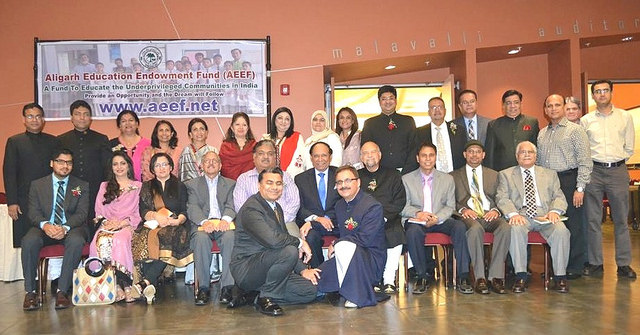
Dr. Shaheer Khan returned to present an AEEF Update. The Aligarh Education Endowment Fund needs about $100,000 for 2014-2015 academic year to fund its projects which include the sponsorship of excellence in education through scholarships, Aligarh Modern School, Hamara School Aligarh, Faizabad Public school (Faizabad), Faiz-e Aam Muslim Inter College (Faizabad), Hira Public School (Ambedkar Nagar), J.A.B.I.C. Bhadarsa (Ambedkar Nagar), J.D.J.B. Anand P.G. College (Faizabad), M.I. Girls Inter College (Faizabad), Rishiraz Singh Maha Vidyalya (Faizabad), and many others.
It is also supporting Saiema Mansoor Public School (Hathras), vocational training for women, a mentorship program and students at premier institutions in India. A short fundraising appeal was made with a target of $60,000 in mind. And in the process, just before the entertainment, the Aligarh Tarana or anthem was enthusiastically played and sung by some of the alumni of AMU present.
The second part of Sir Syed Day is the “International Mushaira” which brings together some of the finest poets or practitioners of Urdu language poetry from around the globe (mainly from where it is used most, India and Pakistan). Countries can be partitioned but one cannot do that with a language. Urdu’s birthplace is in India where AMU is physically located too, but Urdu ironically is the national language of Pakistan. Where borders and governments divide, language-culture and family unite. I did get an opportunity at this event to meet the Consul of India in San Francisco and air the trials and tribulations of getting a visa for India for a person of Pakistani origin!
This year the list of poets was “Pakistan heavy” for the lack of a better term. The Mezban or host poets in order of appearance were Shahid Siddiqi (Canada), Misum Samer (Bay Area), Faisal Azeem (Canada), and Ahmar Shehwaar and Tashie Zaheer (both from the Bay Area). The Mehman or guest poets were Ambareen Haseeb ‘Amber’ (Pakistan), Nusrat Mehdi (India), Abbas Tabish (Pakistan) and Sarfraz Shahid (Pakistan). Two new aspects were noted in this year’s Mushaira. One the Nizamat was done by a young lady (Amber) and two the Sadarat and closing poet (Sarfraz) was the one who provided comic relief (possibly designed so that people went home in a good mood).
It would take another full article here just to cover the Mushaira segment of the evening. But just to highlight some of the activity here, senior poet Abbas Tabish aptly described the entire Mezbaan Shayir group (locals) as amongst the most talented that he has ever seen. All of them were worthy and it was good to see young Faisal Azeem back in this area. I just had to thank Tashie Bhai personally for his one line that made us proud. In a nutshell none of the local “amateur” poets were less than professional!
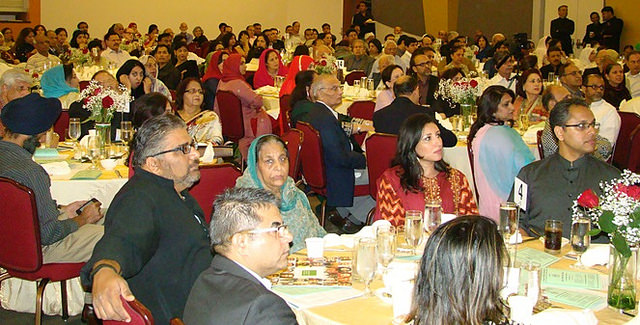
Amongst the four Mehman Shayir’s (guests) Ambareen was extremely entertaining both as a poet and in her “Tum Bhi Naa” and in her Nizamat role. Nusrat Mehdi was the feminist voice of the evening and she was amazing in Tarannum especially with her “Mein Bhi to Hoon”. Abbas Tabish was his usual pensive self with his “Intizar ke Lamhe” and his ode to mothers everywhere. And last but not least Sarfraz Shahid who in his Sadarat role provided enough comic relief to us that many had smiles on our faces as we made our way out of the door. His take on “Maulana and Hoorain”, romance in Cricket “Musalman mard ko char hi run ki Ijazat Hai” and his political cutlery were all very well received.
The Annual Sir Syed Day Aligarh magazine was also released on this occasion. The magazine is dedicated to Hali and Shibli. This year marks the 100th death anniversary of Maulana Altaf Husain Hali and Maulana Shibli Nomani, two pivotal members of the team of Sir Syed’s ‘Rufaqaa’ in the establishment of the MAO College.
In conclusion we did not stay for the doosra daur (round two) of the poetry but it was already quite a rewarding and satisfying event for us. The Aligarh Alumni Association of Northern California once again needs to be congratulated for holding this gathering where everyone enjoyed the food, revisited Sir Syed’s vison and participated in quality entertainment.
source: http://www.twocircles.net / TwoCircles.net / Home> News / by Ras H. Siddiqui, TwoCircles.net / September 30th, 2014
